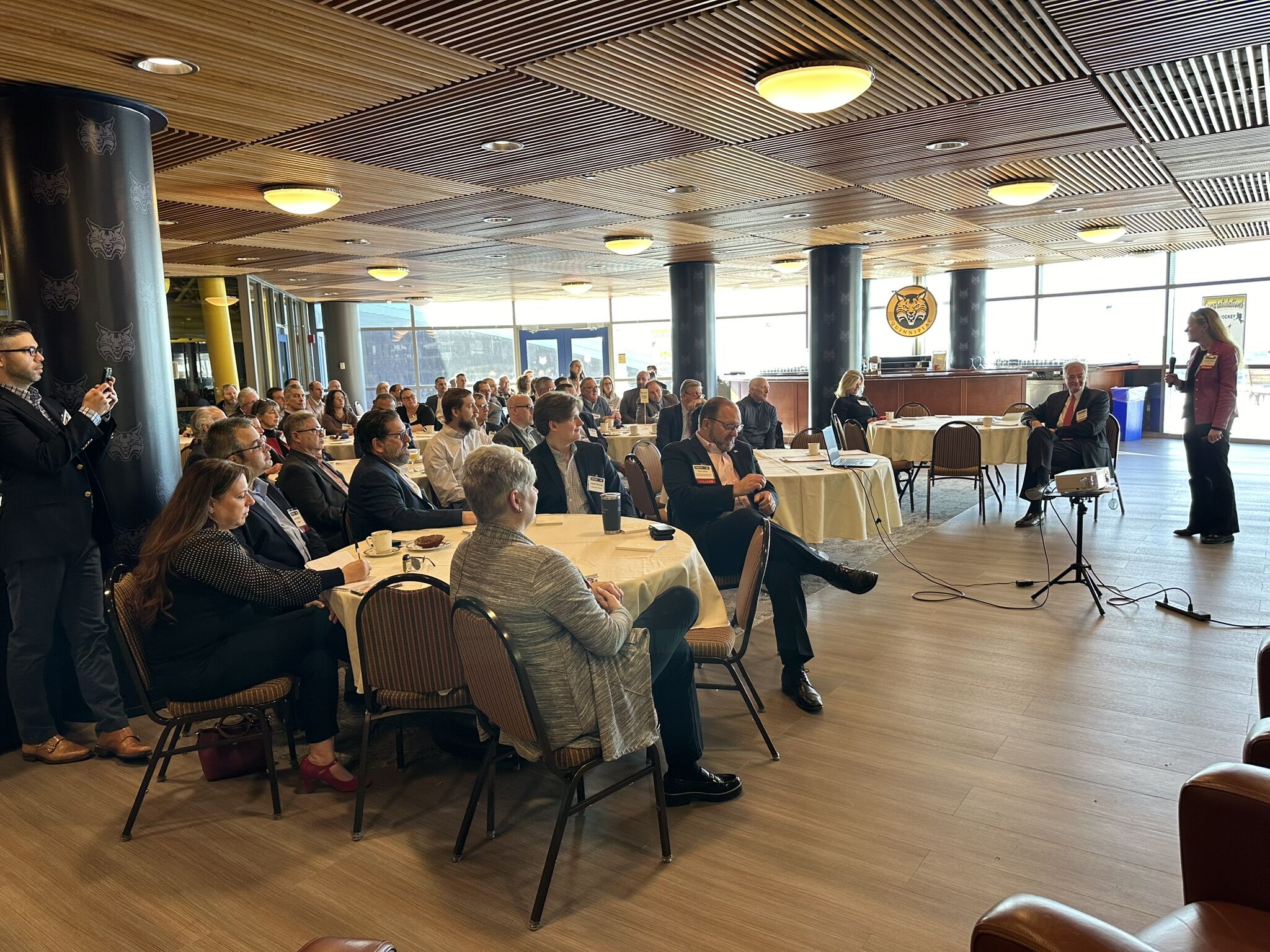Top Ten Takeaways from ManufactureCT “What’s Next?” Forum

On February 15th, 2024, CLA family members joined the “What’s Next?” forum hosted by ManufactureCT. The economy, finding people, the decarbonizing of manufacturing, and role of automation took center stage as key discussion topics. Here’s a recap of what we heard.
- Slowing Economy?
According to economic indicators shared by John Traynor, the global economy is slowing. Data he presented was used to correctly predict eight recessions since 1960, and incorrectly predict two. Based on these historical patterns a recession is a possibility in the coming months. A few things have economists off balance, however. Consumer spending remains robust and continued low labor participation rates that put us in soft landing territory during 2023 – continue to trend in 2024.
2. Labor Participation Remains Low
John shared there were 12 million job openings a few months ago which are down to around nine million today. He’s seeing a trend where employers are “labor hoarding” – avoiding layoffs and investing in training. The concern is if workers are given up now, they won’t be able to find them again.
3. Capturing the Knowledge of a Retiring Workforce
In 2011 the first Baby Boomers started to retire. In 2024 Baby Boomers are retiring at a rate of 12,000 per day. For manufacturing, that means a lot of institutional knowledge is walking out the door. Manufacturers are using automation to get creative with capturing that knowledge into standardized work and repeatable processes. In this case study, a manufacturer uses automation to capture the deep knowledge of a retiree and cut order intake time by 75%.
4. Getting Creative with Attracting People – Internships
To attract and retain workers, companies are implementing generous referral programs and offering new training opportunities. Companies are also going even further upstream and working with high schools to build a strong talent pipeline. High school students come with less baggage but the program to support them must have a lot of structure. Each internship is bespoke. Summer internships for college students are yielding good results, and referrals amongst their friend networks have resulted in a steady stream of new applicants. Interns keep referring other interns.
5. Cross Training
A silver lining in the pandemic: it forced companies to cross-train workers. That’s now paying off as a competitive advantage for mid-size manufacturers when new recruits who are attracted to the idea of variety. The value proposition to a new mechanical engineer, for example, is that he or she can get in year one a full-life cycle experience that would take five years at a larger company.
6. Referral Bonuses
Panelists agreed that a few hundred dollars won’t cut it. To really make an impact, a few thousand dollars has produced better results. One manufacturer noted that employees making referrals are more likely to recommend those that will fit into their culture. The referrer’s personal reputation is on the line.
7. Near-Shoring
For the first time in 20 years, the USA bought stuff more from Mexico than from China, as the trade deficit with China dropped 20% to around $427 billion. An unprecedented number of Chinese manufacturers are investing in manufacturing assets in Mexico. Inbound Chinese Foreign Direct Investment into the Mexican industrial parks grew by 30% from 2021-2022, according to the Mexican Secretary of the Economy.
8. Re-shoring
Closer to home, Manufacturers have spent ½ trillion on reshoring related construction over the past couple of years according to the US Census Bureau. The Infrastructure and Investment Jobs Act (IIJA) freed up nearly $370 billion in manufacturing related tax credits. CLA’s credits and incentives as well as tax professionals help manufacturers tap into those.
9. Culture of Automation
With long-term demographics trending downward in developed countries, the US is expected to struggle with labor participation rates for decades to come. AI and BI are taking center stage. In the front office, AI is being used to automate repetitive tasks, like data entry with standard business documents, and free up staff for more value-add activities to grow he business. BI or Business Intelligence helps puts data at executives’ fingertips to run the business in real time. You can see a demo of how BI works here.
10. Tax credits and exchanges
Take your tax professional to lunch! There is more money for tax incentives and credits out there than ever – related to clean energy and economic stimulus incentives, enabling manufacturers to explore a wide variety of ways to finance projects. These advanced manufacturing production credits can be claimed as a dollar-for-dollar reduction of federal income tax liability or as a direct payment from the IRS. Credits can also be sold on an exchange and purchased by C-corps to reduce taxes owed.
In this case study, you can explore how this automotive fixtures manufacturer tapped into a $130k tax credit.
The Bottom Line
While storm clouds may be forming around the economy, there are plenty of creative ways to move programs forward in manufacturing between credits and incentives related to the IRA, IIJA, and CHIPS and Science Act.
Like to explore economic opportunities for your business? Contact us.
Jennifer Clement is an executive sales and marketing leader specializing in value creation for the C-suite. In her current role at CLA, Jennifer collaborates on strategy with executives of global manufacturing and distribution companies to accelerate results. Previously Jennifer served as a Global Business Acceleration Leader for Complete Manufacturing and Distribution (CMD). During her time with CMD, Jennifer lived and worked in Asia from 2015-2019. Prior to CMD, she spent 10 years in senior care technology. Jennifer started her career at Johnson Controls (JCI) and spent nine years in leadership roles; followed by five years at Rockwell Automation (ROK) leading c-suite strategy and marketing operations.

Comments are closed.